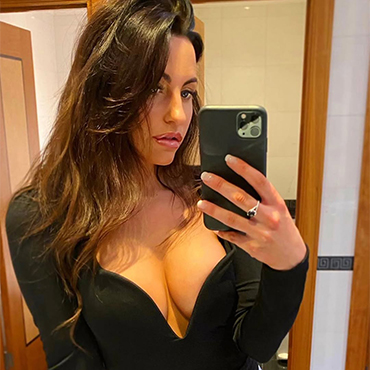

Why choose us for Breast Enlargement?
- You will be seen and operated on by a fully qualified BAAPS/BAPRAS Consultant plastic surgeon.
- Our breast implants come with a lifetime guarantee against rupture.
- Our prices are competitive and represent outstanding results.
- We provide a personal and holistic service to our patients.
- We pride ourselves on NEVER having used PIP implants.
- We put your safety first!
Cosmetic Surgeons London strive to achieve the best for all their patients by providing as much detailed information about their chosen procedure. Breast enlargement (also known as breast augmentation, augmentation mammaplasty and in the media as “boob job“) is a procedure undertaken to enhance the appearance of the breasts creating larger, soft, natural breasts. The procedure involves the placement of implants underneath the breast tissue or the under the chest wall muscles (pectoral). This may help balance the size and shape of the breasts in relative proportion to the rest of the lady’s body.
Lifetime guarantee implants


Unlocking confidence for
our patients



















Am I a good candidate for
breast augmentation/ enlargement?
Your surgeon will discuss with you in an unhurried manner your reasons for considering breast augmentation.
Breast enlargement is for ladies who:
- Want to enhance the size of their breasts
- Want to increase cleavage
- Want to correct the effects following pregnancy and breast feeding
- Want to regain breast size after weight loss
- Want to correct differences in size between both breasts
- Want to correct uneven or deformed breasts
- Want to correct an absence of breast tissue due to a congenital (birth) problem
- Want to boost self-esteem and self-confidence.


Procedure Overview
Operation Time
45 mins
Anaesthetic
General Anaesthesia
Nights in Hospital
Day Case / 1 night
How much time off work?
1-2 weeks
When can I exercise?
After 6 weeks
Book a 3D Remote Consultation
Evaluate and discuss the best options for you through remote video call.
FAQs
Are silicone implants safe?
Silicon implants have been in use for many years. In the 1990s concerns were raised about the use of such implants. Consequently, many large international studies were undertaken and it has been shown that there is NO association with breast cancer or with connective tissue diseases. For further information on these studies and others please consult the Department of Health website.
What types of implants are available?
Implants vary according to content (silicone or saline), shape (round or teardrop), surface (textured or smooth), projection (low, medium, high, extra-high profile).
Where will the breast implants be placed?
Your surgeon will make a detailed assessment at the time of your initial consultation as to where your implant should be positioned (i.e which pocket). Generally, there are 3 locations:
Subglandular:
This means “on top of the muscle” but “underneath the breast (gland)” also known as “OVERS”. This is used when there is sufficient breast tissue to cover the silicone implant in your upper pole. On occasion it may be used to produce an enhanced look.
Dual Plane:
The dual plane technique is a combination of subpectoral and varying degrees of subglandular pockets also known as “UNDERS”. It involves releasing the muscle partially at the appropriate point so that you can have the benefits of having some of the implant above the muscle and some of the implant below it. In certain body shapes it helps achieve a more natural look particularly when there is less upper pole tissue.
What size should I have?
Cosmetic Surgeons London provides a comfortable setting in which you may trial various sizes of implants. These trial implants are provided by your surgeon and placed inside your bra. This allows you to get an idea as to what size is right for you. At Cosmetic Surgeons London we use a Biodimensional Sizing kit. This kit gives you the most accurate idea of what you will look like after your operation. The surgeon will guide you on implant size with regard to your body proportions but ultimately the choice of size is up to you, the patient! We advise that you bring with you a white t-shirt or top of your choice so you can see the immediate transformation after the sizing session.
How long do they last?
Breast implants are not permanent devices and all will need to be replaced at some point in the future. The implants we use at Cosmetic Surgeons London come with a lifetime guarantee against leakage and rupture. We have never used PIP implants in our practice and take pride in the quality and safety we offer to our patients. Some may need to be changed earlier due to pregnancy and body shape changes, capsular contracture or you may wish to change your implant size through personal choice to go larger.
Where will the scars be after breast augmentation?
Scars can be in a number of places. The most common placement by your surgeon will be in the crease underneath your breast (inframammary incision). Alternatively, it can be placed at the border of the nipple-areola and skin (periareolar incision).
Will I be able to breastfeed after breast augmentation?
Breast feeding tends not to be affected by the placement of silicone implants. Also there is no evidence to suggest that the baby would receive large amounts of silicone through the breast milk. There is more silicone present in the environment and the teats of feeding bottles than in the milk of implant mothers.
Will the implants interfere with mammographic screening?
Breast implants may interfere with mammography and the detection of breast cancer. It is therefore important to let your surgeon know if there is a family history. When having a mammogram it is important you inform the radiographer that you have breast implants so that special views can be undertaken in order to optimize the mammographic process. Breast implants do NOT increase the risk of breast cancer.
Your Breast Enlargement Journey

Before Surgery
You’ll meet with your surgeon more than once to ensure all your questions are answered. Avoid medications like aspirin, ibuprofen, and other anti-inflammatories for one week before surgery, as they can increase bleeding. If you smoke, it’s best to stop at least two weeks before and after the procedure to support healing and reduce anaesthetic risks.
The Day of Surgery
You’ll arrive at the hospital on the morning of your procedure. Your surgeon and Consultant Anaesthetist will review the plan with you and mark your skin. The operation takes around 45 minutes, and most patients go home the same day. You’ll need someone to drive you and stay with you for 24–48 hours. In some cases, an overnight stay may be recommended.
Recovery
Some swelling, bruising and tenderness is expected, especially if implants are placed under the muscle. Pain relief will be provided to keep you comfortable. You’ll be up and moving the same day, but should avoid getting dressings wet and follow advice for bathing. Most people return to work within 1–2 weeks, but avoid heavy lifting or exercise for 6 weeks. Swelling will gradually settle over 3 months, and scars continue to improve for up to 18 months. You’ll have a follow-up after 10–14 days, during which your dressings are removed and stitches trimmed. Wearing a supportive sports bra for 6 weeks is recommended to aid healing.
Safety and potential complications?
Scars
Scarring on the whole is not problematic. A scar will always exist and will be hidden in the curve underneath the breast or at the junction of the areola and the skin. Certain individuals e.g. afro-carribean races and red haired individuals are at a higher risk of forming excess scar tissue (keloid or hypertrophic scars). Should these scars develop excellent advice and treatment will be provided by your surgeon.
Infection
This is an uncommon event and occurs in less than 0.5% cases. If it does occur and the implant gets infected then the implant may have to be removed and remain out for 3 months. Once everything has settled a fresh implant will be replaced into the breast. Antibiotics are given during induction of anaesthetic and a short course of tablets afterwards.
Bleeding
Rarely, small blood vessels that have been cauterised during surgery open up afterward. This results in a collection of blood (haematoma) that needs to be removed. This involves a return to the operating theatre where the breast implant is removed, the blood collection washed out and the implant replaced. There are no permanent side effects due to this occurrence should it occur.
Capsular contracture
When a foreign material (silicone breast implant) is placed inside the body, the body’s natural response is to react against this and to form a layer around the implant known as the “capsule”. This is entirely normal and in the majority of patients this capsule is soft and cannot be felt. In a minority of patients, this capsule is much thicker and can cause discomfort and alter the shape of the breast. These patients may require further surgery to correct this.
Asymmetry
Most ladies have breasts which are slightly asymmetrical. The surgeon will point out any small differences between the two breasts to you before your surgery as often these small differences become more apparent following surgery.
Nipple sensation
Most ladies experience some alteration in the sensation around the nipples following breast augmentation. They may become over or under sensitive. In the majority of patients sensation becomes normal over time.
Rippling/Wrinkling of the implant
Breast implants can become palpable over time if the soft tissues become stretched over the implant with time and if the skin is relatively thin. At the same time rippling can also be seen in certain ladies.
Implant rupture & silicone leakage
Modern day silicone breast implants are made out of a “cohesive” gel which resembles the texture of jelly babies. If such implants leak the silicone does not leak like a runny fluid (as was the case in the older implants 20 years ago) but rather it stays near its original position. This potentially minimises that spread of silicone around the body.
Deep Vein Thrombosis (DVT)
Any general anaesthetic procedure is associated with a small risk of DVT which can potentially move to the lungs (Pulmonary Embolus). Here at Cosmetic Surgeons London we attempt to minimise this risk by the use of compression stockings before and after surgery, use of pneumatic compression devices during surgery and motivating the patient to mobilise as soon as possible after surgery.
